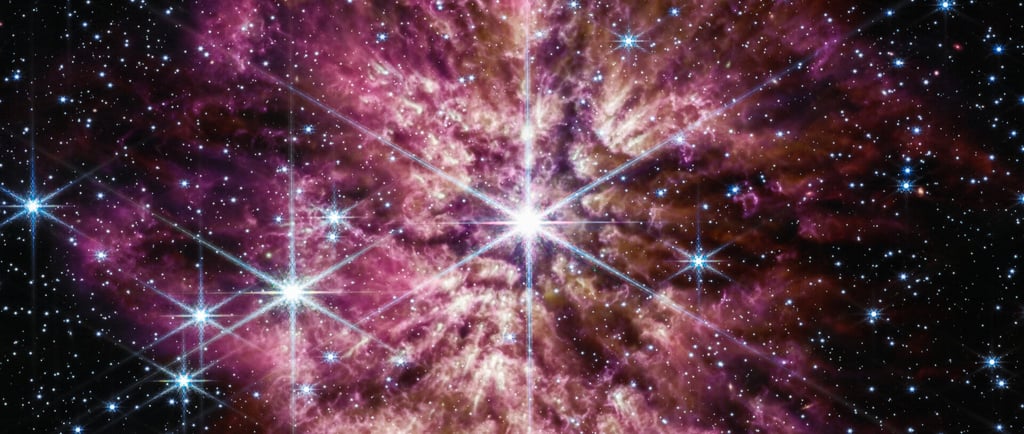The Wolf–Rayet Stars


The Wolf–Rayet Stars
Wolf–Rayet stars represent a fascinating and rare class of stars in the universe, distinguished by their unique spectra that exhibit prominent broad emission lines of ionised helium, nitrogen, and carbon. These stars have garnered significant attention from astronomers due to their unusual properties and the critical role they play in the evolution of massive stars.
The Characteristics of Wolf–Rayet Stars
Typically, Wolf–Rayet stars are classified into two main types: WN stars, which are rich in nitrogen, and WC stars, characterized by a significant presence of carbon. This variation hints at distinct evolutionary pathways these stars experience. With temperatures reaching up to 200,000 K, they are considerably hotter than most other stars. Their surface winds are incredibly strong, spewing out vast amounts of stellar material into space. This loss of mass is a crucial part of their life cycles, often leading to supernova events. As such, the emission spectra of Wolf–Rayet stars provide essential insights into the processes occurring within and around these cosmic giants.
The Role of Wolf–Rayet Stars in Stellar Evolution
Wolf–Rayet stars are pivotal in shaping the chemical makeup of galaxies. As they evolve, they produce heavy elements through nuclear fusion processes. When they eventually reach the end of their lifespans and explode as supernovae, they release these elements into the interstellar medium. This enrichment process contributes significantly to the cosmic chemical evolution, allowing for the formation of new stars and planets. Additionally, Wolf–Rayet stars are believed to be precursors to gamma-ray bursts, one of the most energetic explosions in the universe. Understanding their lifecycle enhances our knowledge of stellar evolution, galactic dynamics, and the overall life cycle of matter in the cosmos.
The Importance of Studying Wolf–Rayet Stars
The study of Wolf–Rayet stars offers a remarkable window into the nature of massive stars and their impact on galactic evolution. As research continues, astronomers utilize cutting-edge technology and techniques to observe and analyze these enigmatic stars. The insights gained not only deepen our understanding of stellar processes but also enhance our broader comprehension of the universe’s lifecycle and evolution. Wolf–Rayet stars stand as a testament to the complexity of the cosmos, illuminating the paths of matter from star birth to the intricate web of the universe.
